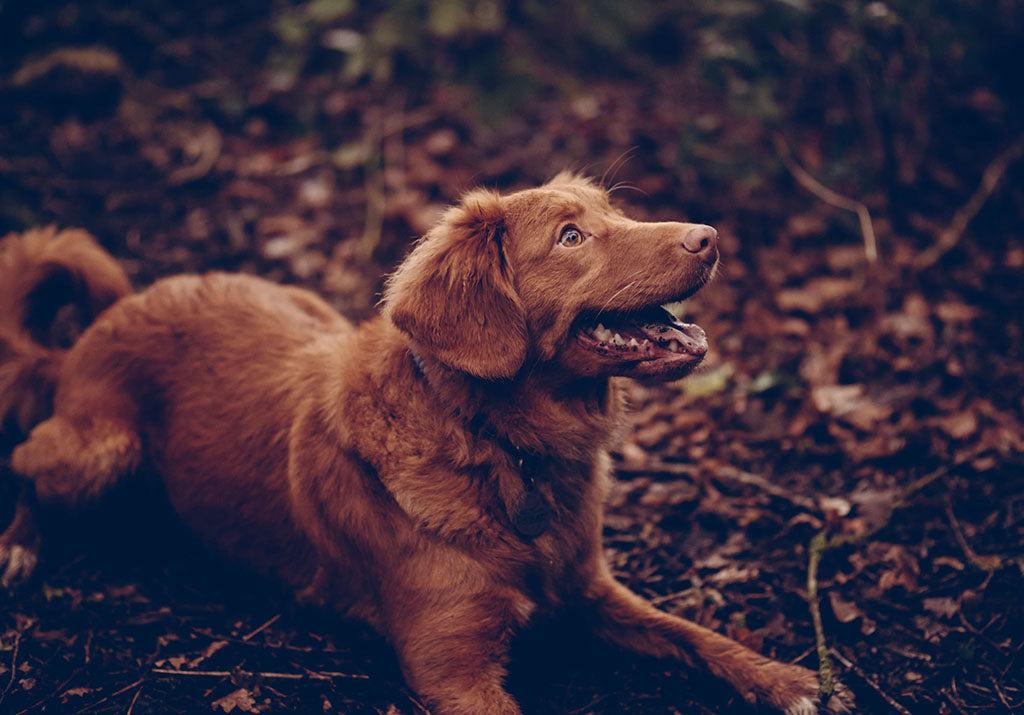Burrs in dog fur can be an uncomfortable affair for your dog – and a tricky one for you! Learn how to get burrs out of your dog’s fur effectively below.
How to Get Burrs Out of Dogs Fur

During Fall, the plants around us begin drying out and they shed their seeds. These pods of seeds are called “burrs” (or sometimes “stickers”) and they love nothing more than to cling to fabric and fur!
However, if a burr is left on a dog’s fur it can lead to discomfort, irritation and even infection as the sharpness of some burrs do have the potential to cut into the skin. So, it’s really important as pet parents that we know how to remove a burr from our pup’s fur – particularly if we own a pup with a thick undercoat or long coat who are more susceptible.
Burrs On Dogs
Burrs on dogs can be found anywhere on their body that has hair. The most problematic areas are the armpit, the tail, between their toes, their earflap (pinna), and their butt/genital area. That’s because these are the most sensitive areas on your dog, and they may be reluctant to allow you to help them out with a sneaky burrowing burr lurking there!
However, as we’ve established, timely removal is necessary so let’s learn how to remove burrs from dog fur…

How to Get Burrs Out of Dogs’ Fur
Obviously, first and foremost we need to make your dog feel at ease and understand that they’re going to be rewarded for being patient during this process. So, have their favorite healthy treats to hand and come at them with patience and soothing vocal tones to ensure this process goes as smoothly as possible! It’s also advisable having a second friendly face with you to help hold your dog when necessary and also make a big fuss of them when they’re being good!
You will also need a pair of gloves to protect your hands, some olive oil, a wide-toothed comb (preferably metal), and a pair of pliers.
Then, you can begin!
- Put your gloves on. Then, if there are several burrs, try and work out the easy wins – the burrs that look the loosest – so you can get your dog used to what’s happening.
- Crush the burr with the pliers. Breaking them up means you can gently remove smaller pieces of burr with the comb instead of pulling at the whole thing which can hurt and distress your pup. Keep your hand between your dog’s skin and the burr so it won’t reattach easily and make sure to comb away from the root.
- If your dog’s fur and the burr are stubborn, applying some olive oil may help to lubricate it off. It doesn’t necessarily have to be olive oil, it can be any oil, but just make sure the oil is safe for your dog to lick (so, coconut or sunflower oil) as they’ll probably attempt to do this once the burr is removed. You’ll need to bathe them after the burr removal is done to clear them of any oily residue.
In severe cases, you may need to shave or cut the burr out. Don’t attempt to cut the fur the burr is attached to if it won’t dislodge at all – you may cut your dog’s skin. A shaver reduces this risk. Keep up the soothing vocal tones and treats as the shaver will make a noise and this may spook your pup.
If you are under-confident in any way about removing burrs from your dog’s fur, contact your vet or a local, qualified dog groomer who will be able to do this for you.

Swallowing Dog Burrs
Some super-fast and curious pups may swallow, inhale or ingest a burr. Your required action will depend on their reaction. If they seem fine and continue to eat and drink as normal after consuming the burr, then the likelihood is the stomach will coat it and it will digest and pass through naturally. If your dog becomes lethargic, begins drooling excessively, starts coughing, gagging or seems to be struggling to breathe they will require veterinary intervention quickly.
Avoiding Dog Burrs
Not walking your dog in woodland over Fall is the most surefire way of preventing burrs. However, this is no fun for anyone!
Keeping your dog on a short leash during woodland walks over burr season may help reduce the risk of them attaching but the most useful thing to do during this time is to keep them well-groomed. The shorter their fur, the less likely burrs will attach themselves and if they do still manage to, removing them will be far easier.
Also read: Removing Tree Sap From Your Dog
Sources
Author Maharaj, Nandini “How To Get Burrs Out of Dog Fur” American Kennel Club, Oct 14. 2022 https://www.akc.org/expert-advice/health/how-to-get-burrs-out-of-dog-fur/
 S
S



